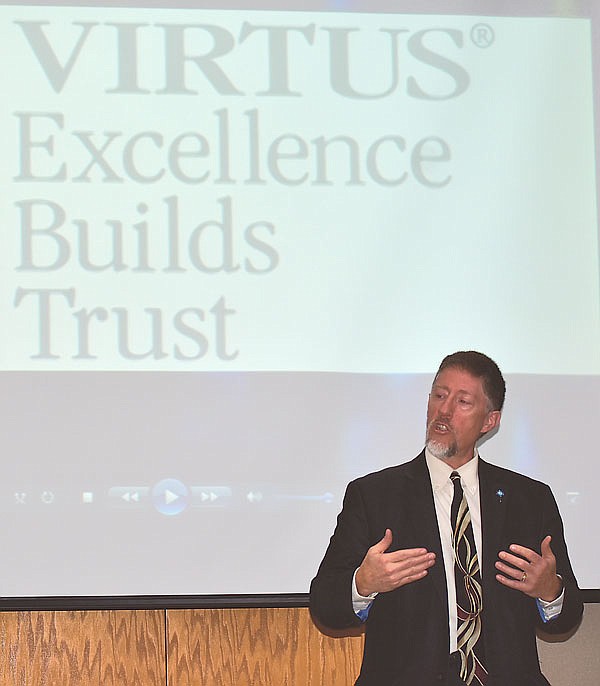Fourteen people attended a two-hour training session Sunday by the Catholic Diocese of Jefferson City designed to protect children and vulnerable adults from sexual abuse.
The training, called VIRTUS, started not long after a 2002 Boston Globe story shined light on child sexual abuse by priests in the Catholic Church. Diocese workers and volunteers are required to attend the training.
"Virtus is a Latin word that means valor or moral strength or excellence," presenter Michael Berendzen said. "In the old, old times, it was really used to denote a way of life and behavior that aspired for the highest attributes, the best. And, quite honestly, I kind of liken it to living a Christ-like manor."
Among other things, Berendzen is the safe environment coordinator for the diocese.
Much of the training consists of two videos, "A Time to Protect God's Children," and "A Plan to Protect God's Children."
The first video interviewed victims of abuse and said "adults must work together to build a wall of protection."
A woman victim interviewed in the video said: "He (a priest) told him he was helping me. I thought it was wrong, but he told me it was right."
A man said he tried to kill himself at the age of 15, after he was abused. "The pain was unbearable," he said.
The video said abuse can lead to relationship problems, depression and addiction, among other problems.
The video said 5-10 percent of adult men and 20 percent of women say they were abused as a child. Berendzen said those numbers are now believed to be even higher.
Berendzen asked the attendees how they felt after watching the first video, and many said "angry" or "sad."
"I don't want you to walk away from here paranoid," he said.
One positive thing, he said, is studies have shown the VIRTUS training has helped, and fewer cases of abuse in the church have occurred each year since the training started.
The training discussed five myths about child sexual abuse, including the thought most abuse occurs at the hands of a stranger. Berendzen said strangers account for only 11 percent of the abuse, while 29 percent is by family members. The other 60 percent is from someone the victim/family knows.
Other myths that have been debunked include: abusers can be determined by their physical characteristics, abusers are mostly homosexuals, clergy abuse happens because of their vows of celibacy, and that children tend to lie about being abused.
Berendzen also discussed the increase of technology-facilitated victimization that has come with the internet and social media. In some of these cases, the victims don't realize they are victims; they think they have a relationship with the predators, who often use psychological and physical grooming to gain the trust of children.
He said parents need to openly communicate with their children, including what social media programs they use and for what purposes. Some such programs are bad for children, he said, such as "Secret Calculator," which lets you hide photos and video.
The training talked about warning signs, including adults that are more excited to be with children than adults, and who discourage other adults from participating or monitoring their activities with children.
It also discussed monitoring ministry programs, which includes having adults only meet with children where other adults can have open access, identifying secluded areas and locking empty rooms.
Berendzen also stressed the importance of reporting of suspected abuse, the need to openly communicate with children, and to discuss concerns or suspicions with anyone who interacts with children.

